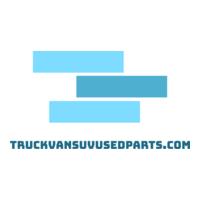Army trucks, especially models of the last century, often face a shortage of spare parts, which are difficult to find in the free market. This creates significant difficulties in the repair and maintenance of equipment. One of the most effective solutions is the use of technologies such as reverse engineering and 3D printing, which allows you to restore worn or lost components without having to look for original analogues.
Traditional suspension repair methods often require custom manufacturing of parts, which increases the cost and time of work. Modern digital modeling technologies can significantly speed up the recovery process and reduce dependence on outdated production chains. This is especially important for military equipment, where efficiency and reliability of repairs play a key role. Similar problems are encountered in other high-tech areas, such as electric vehicle safety systems, where diagnostics require taking into account unique features.
The use of 3D printing using metal and composite materials opens up new opportunities for suspension repair. These technologies allow you to create parts with high accuracy, reproducing the geometry of the original components. One of the main advantages is the ability to adapt the design to modern materials, which not only extends the service life of the equipment, but also increases its operational characteristics.
Reverse engineering as a solution for obsolete parts
Digitizing the remaining samples of suspension parts is the first step to restoring them. 3D scanning creates an accurate digital model that is analyzed for wear and defects. Next, engineers adjust the model, eliminating damage and optimizing the design. This process requires a deep understanding of mechanics and materials science.
3D metal printing allows you to reproduce parts that can not be found on the market. Selective laser sintering (SLS) technology ensures high strength and wear resistance of printed components. It is important to take loads and operating conditions into account when choosing the printing material and parameters. This ensures that the new part is as reliable as the original one.
The integration of remanufactured components into the suspension requires testing and refinement. Testing on the stands simulates real loads, identifying potential weaknesses. After successful tests, the parts can be put into mass production for the needs of specific equipment. This approach saves time and resources while keeping the fleet fully operational.
Practical aspects of restoring suspension parts
The restoration process begins with a thorough diagnosis of the remaining part samples. Even heavily worn elements can serve as the basis for creating digital models. Specialists use a combination of manual measurements and laser scanning for maximum accuracy. The obtained data become the foundation for further work in CAD programs.
When creating new parts, consider several critical factors:
- Mechanical loads in various operating modes
- Temperature expansion of materials
- Compatible with existing suspension assemblies
- Possibility of subsequent maintenance and replacement
These parameters directly affect the durability of refurbished components and the safety of their use.
Finishing printed parts requires no less attention than designing them. Grinding, heat treatment and protective coatings bring the products to the required performance standards. Quality control at every stage of production is particularly important. Only a comprehensive approach guarantees the reliability of restored suspension elements in the field.
Materials and technologies for 3D printing of automotive components
The choice of material for restoring suspension parts requires taking into account many factors. Metal powders based on steel and titanium provide the necessary strength for critical components. Carbon fiber composite materials are suitable for elements where lightness and vibration resistance are important. For less loaded parts, special polymers with high wear resistance can be used. Each material requires fine-tuning of the print settings.
Layer-by-layer deposition (DED) technology is optimal for large suspension parts. It allows you to build up metal directly on worn surfaces, restoring the geometry of the original. Laser sintering (SLM) provides more accurate results for complex shaped components. Material savings are achieved by optimizing the internal structure of the part while maintaining its strength characteristics.
Post-processing of printed parts includes mechanical processing and heat hardening. Grinding eliminates micro-roughness, improving the accuracy of mating parts. Heat treatment relieves internal stresses that occur during the printing process. The final anti-corrosion coating significantly increases the service life of refurbished components.
Prospects for the development of repair technologies
Army auto repair shops are gradually introducing mobile 3D-printed complexes. Such equipment can be quickly deployed in the field for emergency repairs. This reduces the recovery time of equipment and reduces dependence on spare parts supplies. Mobile solutions are particularly valuable for remote garrisons and war zones.
The development of cloud-based drawing databases for obsolete parts accelerates the reverse engineering process. Mechanics can now access proven models from anywhere in the world. Artificial intelligence helps to optimize structures for modern materials and loads. This creates the basis for a global support system for obsolete military equipment.
Improving 3D printing technologies opens up new opportunities for repairs. It is already possible to create “smart” parts with built-in wear sensors. In the future-printing entire suspension units with improved performance. These innovations turn the problem of obsolescence of equipment into the possibility of its modernization.
Questions and answers
Basic techniques include 3D scanning, CAD modeling, and additive manufacturing. SLS, SLM, and DED printing technologies are used for different types of parts.
With the right selection of materials and technology, the printed parts are not inferior to the original ones. They undergo multi-stage quality control and load testing.
Yes, reverse engineering allows you to optimize the design and use modern materials. This often leads to increased strength and reduced weight of the components.
picture

